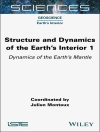Most of the Earth’s biosphere is characterized by low temperatures. Vast areas (>20%) of the soil ecosystem are permanently frozen or are unfrozen for only a few weeks in summer. Permafrost regions occur at high latitudes and also at high ele- tions; a significant part of the global permafrost area is represented by mountains. Permafrost soils are of global interest, since a significant increase in temperature is predicted for polar regions. Global warming will have a great impact on these soils, especially in northern regions, since they contain large amounts of organic carbon and act as carbon sinks, and a temperature increase will result in a release of carbon into the atmosphere. Additionally, the intensified release of the clima- relevant tracer gas methane represents a potential environmental harzard. Significant numbers of viable microorganisms, including bacteria, archaea, p- totrophic cyanobacteria and green algae, fungi and protozoa, are present in per- frost, and the characteristics of these microorganisms reflect the unique and extreme conditions of the permafrost environment. Remarkably, these microorg- isms have been reported to be metabolically active at subzero temperatures, even down to ?20°C.
Jadual kandungan
Geological, Chemical and Physical Properties of Permafrost.- Arctic Permafrost Soils.- Antarctic Permafrost Soils.- Mountain Permafrost.- Biodiversity in Permafrost.- Very Old DNA.- Bacterial and Archaeal Diversity in Permafrost.- Viable Cyanobacteria and Green Algae from the Permafrost Darkness.- Fungi in Permafrost.- Ancient Protozoa Isolated from Permafrost.- Biological Activity in Permafrost.- Microbial Activity in Frozen Soils.- Anaerobic Ammonium Oxidation (Anammox).- Genomic Insights into Cold Adaptation of Permafrost Bacteria.- Proteomic Insights: Cryoadaptation of Permafrost Bacteria.- Impact of Global Warming On Permafrost Properties.- Global Warming and Thermokarst.- Global Warming and Mountain Permafrost.- Global Warming and Carbon Dynamics in Permafrost Soils: Methane Production and Oxidation.- Global Warming and Dissolved Organic Carbon Release from Permafrost Soils.- Climate Change and Foundations of Buildings in Permafrost Regions.- Contaminants in Frozen Ground.- Migration of Petroleum in Permafrost-Affected Regions.- Remediation of Frozen Ground Contaminated with Petroleum Hydrocarbons: Feasibility and Limits.- Application of Reactive Barriers Operated in Frozen Ground.- Permafrost on Earth – A Model for Extraterrestrial Habitats.- Terrestrial Permafrost Models and Analogues of Martian Habitats and Inhabitants.












